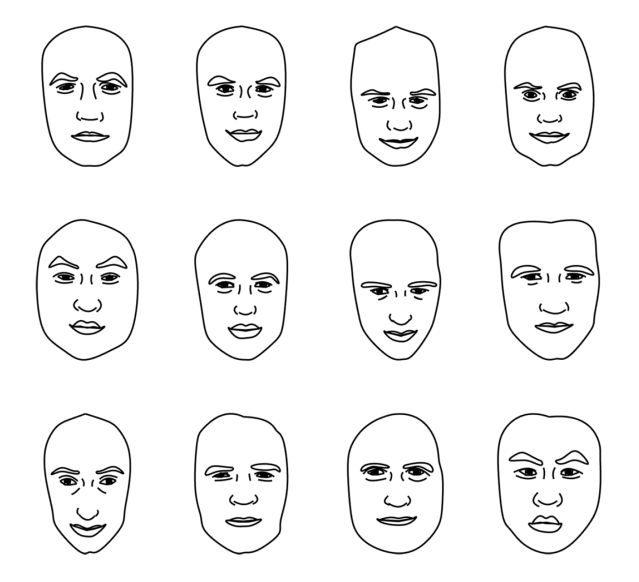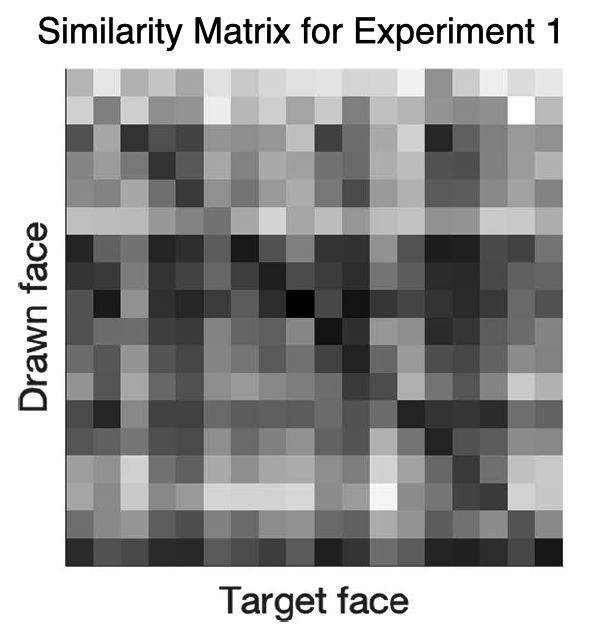Memory
Can We Learn to Draw Faces From Memory?
A new study tests whether people can learn to draw simplified faces from memory.
Updated December 26, 2023 Reviewed by Monica Vilhauer
Key points
- Most people (even trained artists) find it extremely difficult to draw faces from memory.
- A new study used simplified faces that could be easily drawn by copying by non-artists.
- Participants still struggled to produce accurate drawings from memory, even with these simplified faces.
Art students work for years to learn to create good portraits that capture the likeness of a subject. Even among trained artists, it takes a special talent to draw faces accurately. This problem becomes even more difficult if the face is not present during drawing; that is, when one has to draw a face based on memory alone. Indeed, very few individuals possess this talent. Examples can be found among police sketch artists who are able to reproduce a face based on interviews with eyewitnesses.
What makes drawing faces from memory particularly difficult? One possibility is that human faces are all so similar that it requires exquisite attention to detail to create a drawing that truly captures the appearance of one particular face, distinguishing it from other similar faces. Another possibility is that drawing any complex object from memory would be equally challenging. It could be that the act of transforming any complex, 3-dimensional mental representation into a simplified, 2-dimensional line drawing is where the difficulty lies.
Simplified faces
What would happen if we circumvented this aspect of the drawing process by starting with simplified drawings of faces? In other words, what would happen if the face that one is trying to draw from memory is already a simplified line drawing?
In a new study published in Memory & Cognition with co-author Jennifer Day, we addressed that very question. We created a set of 18 parametric face drawings using a methodology described in an earlier paper (Day & Davidenko, 2019). Some examples are shown in the figure below:

In our first experiment, we tested people's ability to draw these faces by copying them. Thirty-seven participants completed 18 trials in which they saw a face on one side of the screen and had 60 seconds to draw it using a stylus on the other side of the screen. We calculated the "accuracy" of each drawing by measuring the distance between key points on the original face and the drawn face, resulting in an error score ranging from 0 to 4 (with lower error scores reflecting more accurate drawings). The results showed that participants were fairly accurate with their drawings, with an average error of about 1.68 on that scale.

The significance of this number can be better understood by looking at the similarity matrix above, which compares the average error between each drawn face (along the rows) and each shown face (along the columns). The dark gray colors along the diagonal indicate that drawings tended to be more similar to the intended face than to other faces in the set.
The real question is whether the same ability is shown when participants are asked to draw these faces from memory. In our second experiment, 22 participants first observed each face for 15 seconds, and after it disappeared, they were given 60 seconds to draw it from memory. Results from this experiment were not as promising. The average error score (1.97) was significantly higher than in the first experiment. Moreover, the similarity matrix did not show a clear diagonal pattern like in the first experiment (see below).

Overall, our results suggest that the challenge in drawing faces from memory does not stem just from the process of converting any complex 3-dimensional representation to a simplified 2-dimensional drawing. Even when we simplify faces by reducing them to simple line drawings, drawing them from memory is still difficult. Future studies may explore whether more time studying the faces or more practice with drawing can make an impact in the accuracy of drawings from memory. In our experiments, participants only studied each face for 15 seconds and only drew a total of 18 faces over the course of the experiment. Finally, our study highlights the value of using simplified face drawings to investigate face memory.
References
Davidenko, N., & Day, J. (2023). Learning to draw parametric faces. Memory & Cognition, 1-11. https://doi.org/10.3758/s13421-023-01498-0
Day, J., & Davidenko, N. (2019). Parametric face drawings: A demographically diverse and customizable face space model. Journal of vision, 19(11), 7-7.


